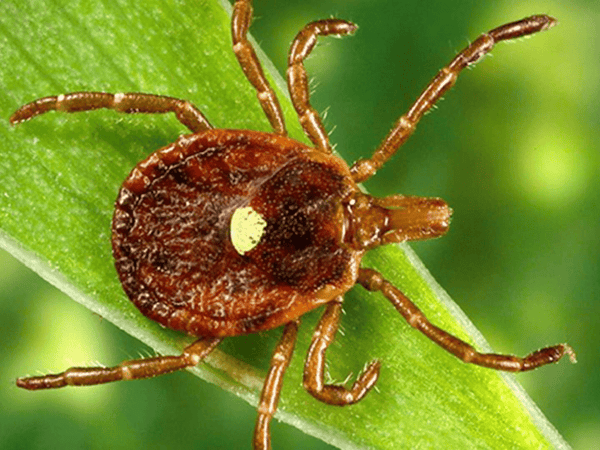Lone Star TIck

Name of Tick: Lone Star tick
Danger Level: Extreme
Nicknames: Northeastern water tick, Turkey tick, Cricker tick
Scientific Name of Tick: Amblyomma americanum
Habitat: The entire eastern half of the United States including all of Texas, the Midwest, portions of Canada including Ontario
Specific Habitat: Wooded areas, forests and second growth forests, in leaves and thick underbrush. The Lone Star tick is often found in grasslands or the transitionary areas between forests and grasslands. The Lone Star tick can also dwell in urban areas. Anywhere white tail deer are found is an area at high risk for Lone Star tick infestation. Lone Star ticks will wait on grass, sticks, or branches waiting for a victim to pass by. They love thick underbrush and will often be present anywhere it is found.
Tick Facts and Information: The Lone Star tick has three life stages, larvae, nymph, and adult. Larvae hunt for hosts during the summer and fall months, they will feed on a mammal for up to four days before dropping off and molting into nymphs. Lone Star tick nymphs are active spring through summer and will hunt humans, they are aggressive biters, a nymph can feed on a host for up to 6 days or more before dropping off and molting into an adult. Adults are active all the way from early spring through early fall, they are an exceptional threat. Adult female Lone Star ticks can lay an extreme number of eggs, 3000 or more. The Lone Star ticks transmits Alpha-gal allergy, a rare devastating meat allergy. If you contract Alpha-gal you become severely allergic to red meat. The Lone Star tick hunts by questing. A bite from the Lone Star tick can cause debilitating disease and result in death.
Tick Color and Appearance: Adult males are brown or caramel colored with reddish backs and black mottling. Adult females have a similar color scheme with the addition of the easily distinguishable telltale silvery “lone star” star shape near their scutum.
Size and Number of Legs: The average adult Lone Star tick is 1/8 of an inch, size will vary greatly during the tick’s life cycle. Larvae have 6 legs, nymphs and adults have 8 legs.
Diseases Transmitted: Lyme disease, Southern tick associated rash illness, Rocky Mountain spotted fever, Alpha-gal allergy, human Ehrlichiosis, Tularemia
Control Solution: Tick Proof Repellent
Full Scientific Classification: Kingdom: Animalia, Phylum: Arthropoda, Class: Arachnida, Subclass: Acari, Order: Ixodida, Family: Ixodidae, Genus: Amblyomma, Species: A. americanum
